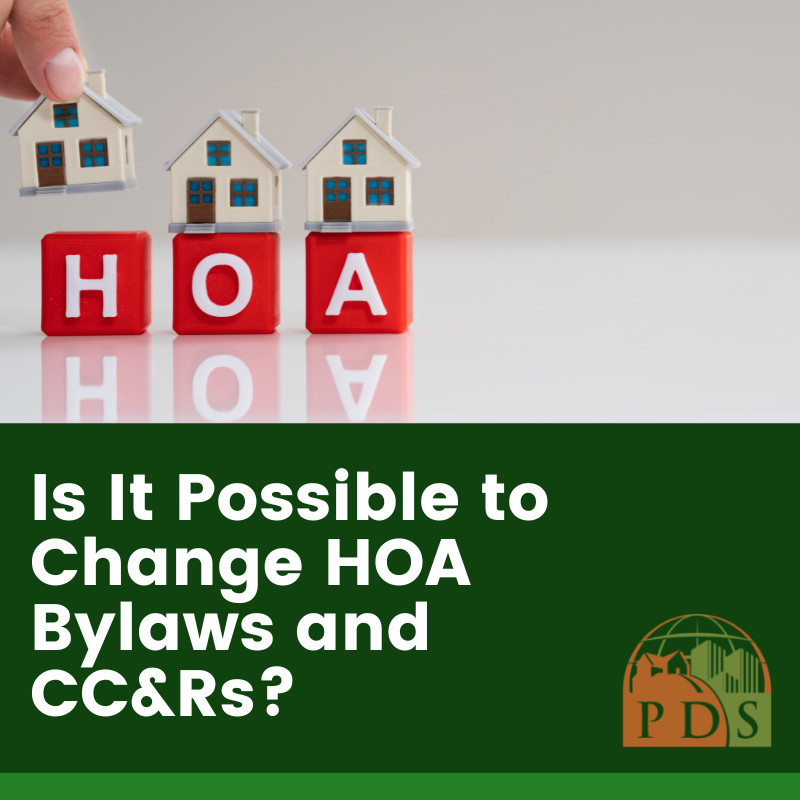
Changing HOA Governing Documents
Every homeowners association has governing documents including the HOA bylaws and documents outlining rules and restrictions. These documents, however, are not etched in stone and there may come a time when they will need to be amended because they are outdated, the needs of the community have changed, or the association has discerned that a new restriction would be beneficial.
Is It Possible to Change HOA Bylaws and CC&Rs (Covenants, Conditions, and Restrictions)?
The bylaws of an HOA determine how the association functions and operates. The bylaws stipulate how many HOA Board members the association will have, when elections are held, responsibilities of Board members, and what is required for community meetings.
Covenants, Conditions, and Restrictions (CC&Rs), lay out the rights, duties, responsibilities, and obligations of both of homeowners and the HOA including any restrictions, consequences of community violations, and insurance requirements.
Both the bylaws and CC&R are usually created during the development of a community. Because they are meant to provide a foundation for the functioning of a healthy and thriving community, the process for changing them is usually lengthy and detailed, but it is not impossible. Both bylaws and CC&Rs can be altered.
6 Common Steps to Amending HOA Documents
Obviously, before starting the process of amending such foundational documents, the HOA Board will want to be certain that there is an actual need to do so. Amending HOA covenants and bylaws can be a lengthy and costly process, so it should only be pursued when there is a definitive need.
Once the HOA Board has decided that a change is necessary, the amendment process can be initiated. Please note that particulars can vary depending on your governing documents, but in general, here is how such a process will normally progress:
- Amendment Proposal
This is a description of the changes wanted to a bylaw or covenant. The HOA Board receives this proposed amendment and then submits it for review.
- Discussion Meeting
The Board will hold a meeting to discuss the proposed amendment. The HOA Board must allow homeowners to provide their input on the proposal at this meeting. In some instances, the Board will call a special meeting in order to confer.
- The Vote
Following the review/discussion meeting, the entire membership of the HOA will then vote for or against the amendment. Depending upon the governing documents, such a vote may need to be done by secret ballot, and/or have a specified extended voting period.
- Counting the Votes
After voting has concluded, the votes will be tallied, usually at an open meeting of the HOA so that homeowners have an assurance of transparency as they watch their votes counted.
- Amendment Approval
A majority vote from the membership is required to approve the amendment. What constitutes a majority will depend on your governing documents. It is common, however, for HOAs to require either two-thirds or three-fourths of the membership to approve the change.
- Proper Recording and the Effective Date
Once an amendment to the CC&Rs has been approved, the amendment and effective date must be recorded with the county recorder’s office. Changes to the bylaws do not need to be recorded in such a fashion, but become effective once the HOA membership is given official notice of the change. when notice is given to the membership of the change.
Know the Proper Procedures to Avoid Liability
Every HOA Board should know the procedure for amending HOA bylaws and CC&Rs. If your HOA Board is approached about amending any governing documents or wishes to initiate such a change itself, please feel free to reach out to PDS for assistance as you begin the process. Following proper procedures will help to protect the HOA Board from any legal difficulties.
